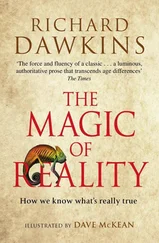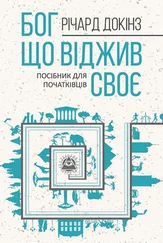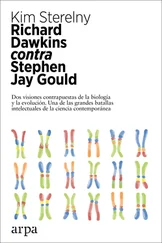Exponential growth, if not checked by lack of resources, always leads to startlingly large-scale results in a surprisingly short time. In practice, resources are limited, and other factors, too, serve to limit exponential growth. In our hypothetical {147} example, individuals will probably start to balk when the same chain letter comes around to them for the second time. In the competition for resources, variants of the replicator may arise that happen to be more efficient at getting themselves duplicated. These more efficient replicators will tend to replace their less efficient rivals. It is important to understand that none of these replicating entities is consciously interested in getting itself duplicated. But it will just happen that the world becomes filled with replicators that are more efficient.
In the case of the chain letter, being efficient may consist in accumulating a better collection of words on the paper. Instead of the somewhat implausible statement that “if you don't obey the words on the card you will die in horrible agony within a month,” the message might change to “Please, I beg of you, to save your soul and mine, don't take the risk: if you have the slightest doubt, obey the instructions and send the letter on to six more people.” Such “mutations” can happen again and again, and the result will eventually be a heterogeneous population of messages all in circulation, all descended from the same original ancestor but differing in detailed wording and in the strength and nature of the blandishments they employ. The variants that are more successful will increase in frequency at the expense of less successful rivals. Success is simply synonymous with frequency in circulation. The “St. Jude Letter” is a well-known example of such success; it has traveled around the world a number of times, probably growing in the process. While I was writing this book, I was sent the following version by Dr. Oliver Goodenough, of the University of Vermont, and we wrote a joint paper on it, as a “virus of the mind,” for the journal Nature: {148}
“WITH LOVE ALL THINGS ARE POSSIBLE”
This paper has been sent to you for luck. The original is in New England. It has been sent around the world 9 times. The Luck has been sent to you. You will receive good luck within 4 days of receiving this letter pending in turn you send it on. This is no joke. You will receive good luck in the mail. Send no money. Send copies to people you think need good luck. Do not send money cause faith has no price. Do not keep this letter. It must leave your hands within 96 hrs. An A.R.P. officer Joe Elliott received $40,000,000. Geo. Welch lost his wife 5 days after this letter. He failed to circulate the letter. However before her death he received $75,000. Please send copies and see what happens after 4 days. The chain comes from Venezuela and was written by Saul Anthony Degnas, a missionary from S.America. Since that copy must tour the world. You must make 20 copies and send them to friends and associates after a few days you will get a surprise. This is love even if you are not superstitious. Do note the following: Cantonare Dias received this letter in 1903. He asked his Sec'y to make copies and send them out. A few days later he won a lottery of 20 million dollars. Carl Dobbit, an office employee received the letter and forgot it had to leave his hands within 96 hrs. He lost his job. After finding the letter again he made copies and mailed 20. A few days later he got a better job. Dolan Fairchild received the letter and not believing he threw it away. 9 days later he died. In 1987 the letter was received by a young woman in Calif. It was faded and hardly readable. She promised herself she would retype the letter and send it on but, she put it aside to do later. She was plagued with various problems, including expensive car problems. This letter did not leave her hands in 96 hrs. She finally typed the letter as {49} promised and goe a new car. Remember send no money. Do not ignor this – it works. St. Jude
This ridiculous document has all the hallmarks of having evolved through a number of mutations. There are numerous errors and infelicities, and there are known to be other versions going around. Several significantly different versions have been sent to me from all around the world since our paper was published in Nature. In one of these alternative texts, for instance, the “A.R.P. officer” is an “R.A.F. officer.” The St. Jude letter is well known to the United States Postal Service, who report that it goes back before their official records began and exhibits recurrent epidemic outbreaks.
Note that the catalog of alleged good luck enjoyed by compliers and disasters that have befallen refusers cannot have been written in by the victims/beneficiaries themselves. The beneficiaries' alleged good fortune did not strike them until after the letter had left their hands. And the victims did not send the letter out. These stories were presumably just invented – as one might independently have guessed from the implausibility of their content. This brings us to the main respect in which chain letters differ from the natural replicators that initiated the life explosion. Chain letters are originally launched by humans, and the changes in their wording arise in the heads of humans. At the inception of the life explosion there were no minds, no creativity and no intention. There was only chemistry. Nevertheless, once self-replicating chemicals had chanced to arise, there would have been an automatic tendency for {150} more successful variants to increase in frequency at the expense of less successful variants.
As in the case of chain letters, success among chemical replicators is simply synonymous with frequency in circulation. But that is just definition: almost tautology. Success is earned by practical competence, and competence means something concrete and anything but tautological. A successful replicator molecule will be one that, for reasons of detailed chemical technicality, has what it takes to get duplicated. What this means in practice can be almost infinitely variable, even though the nature of the replicators themselves can seem surprisingly uniform.
DNA is so uniform that it consists entirely of variations in sequence of the same four “letters” – A, T, C and G. By comparison, as we have seen in earlier chapters, the means used by DNA sequences to get themselves replicated are bewilderingly variable. They include building more efficient hearts for hippos, springier legs for fleas, aerodynamically more streamlined wings for swifts, more buoyant swim bladders for fish. All the organs and limbs of animals; the roots, leaves and flowers of plants; all eyes and brains and minds, and even fears and hopes, are the tools by which successful DNA sequences lever themselves into the future. The tools themselves are almost infinitely variable, but the recipes for building those tools are, by contrast, ludicrously uniform. Just permutation after permutation of A, T, C and G.
It may not always have been so. We have no evidence that when the information explosion started, the seed code was written in DNA letters. Indeed, the whole DNA/protein-based information technology is so sophisticated – high tech, it has been called by the chemist Graham Cairns-Smith – that you {151} can scarcely imagine it arising by luck, without some other self-replicating system as a forerunner. The forerunner might have been RNA; or it might have been something like Julius Rebek's simple self-replicating molecules; or it might have been something very different: one tantalizing possibility, which I have discussed in detail in The Blind Watchmaker, is Cairns-Smith's own suggestion (see his Seven Clues to the Origin of Life ) of inorganic clay crystals as primordial replicators. We may never know for certain.
Читать дальше












